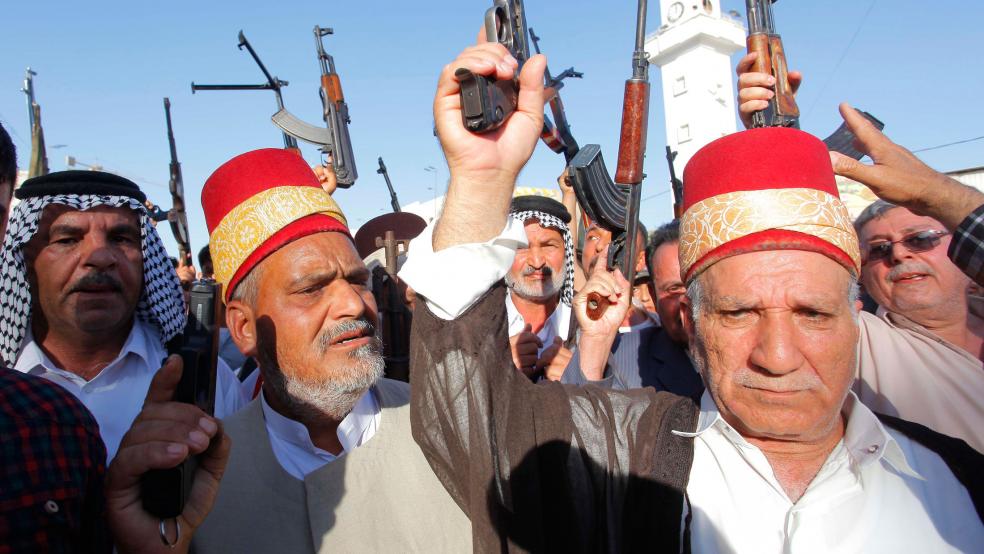The Islamic State of Iraq and Syria (ISIS) continued its advance toward Baghdad yesterday, with Sunni militants taking the Haditha Dam, the second largest in the country.
As the terrorists continue to gain ground, it’s not yet clear what ISIS’ end goals are, other than to create a caliphate. Does ISIS intend to create a formal government? Do they have their sights set on Lebanon? Jordan? Or even on Turkey?
Related: How the Collapse of Iraq Would Affect America
However, it’s becoming increasingly clear what the motivations of moderate Sunnis who are cheering the advance want. According to a report in Newsweek, prominent Sunni cleric Sheikh Ali Hatem al-Suleiman told John R. Maguire, a retired former CIA deputy station chief in Baghdad, that Sunnis are only using ISIS to get Prime Minister Nouri al-Maliki, a Shiite, out of office.
“They're already drawing lines around how this is going to work, to get rid of these guys,” Maguire told Newsweek. “So the fight is coming, but they can't do it until they're sure they have disrupted Maliki and they've got some breathing space to create a different government in Baghdad.”
Whether moderate Sunnis can reign in ISIS is a long shot. And Shiites aren’t likely to give up Baghdad without resistance. But al-Suleiman’s comments show there is the possibility for a political solution in Iraq. And it now appears as if the stars are aligning for a three-state solution that would split Iraq along demographic lines in a way that evenly distributes oil wealth.
Related: The Need for U.S. Special Forces in Iraq
The map below, created by IHS Energy, shows how the country could be split.

The Kurdistan Regional Government would govern Kurdistan in the north. The Kurds hold Kirkuk, a major refinery city. They also have deep oil reserves and have access to one-quarter of Iraq oil.
In the country’s east, Shiites could carve out a country with access to large oil fields located in Iraq’s south. According to Jamie Webster, Senior Director, Global Oil Markets at IHS Energy, ISIS has had little impact on production there.
“The ISIS attacks are unlikely to impact Southern Iraq oil production as they lack both force projection and a focus on oil infrastructure,” Webster wrote in a research note.
In the country’s west, Sunnis would have access to several pipeline, as well as oil fields in Iraq and in ISIS-controlled parts of Syria. According to Webster, Sunnis have no interest in disrupting the Iraqi oil industry, suggesting long-term thinking on the part of politicians as opposed to the trigger finger actions of ISIS militants.
Related: Iraq: We Broke It, but We Can’t Fix It
“Islamic State in Iraq and Syria remains focused more on sectarian battles, including establishing a new Sunni political entity, than attacking oil infrastructure, suggesting longer-term instability but leaving physical oil markets intact for now,” Webster wrote.
This solution is not the one that the United States wants. But creating three states might be the only way to stop ISIS from taking over southern Iraq and a war with Kurdish forces.
Top Reads from The Fiscal Times
- Why Vietnam Will Be the Next Nuclear State
- Japan’s Pivot Away from the West Leads Back to China
- Obama’s Former Syria Ambassador Slams U.S. Policy




